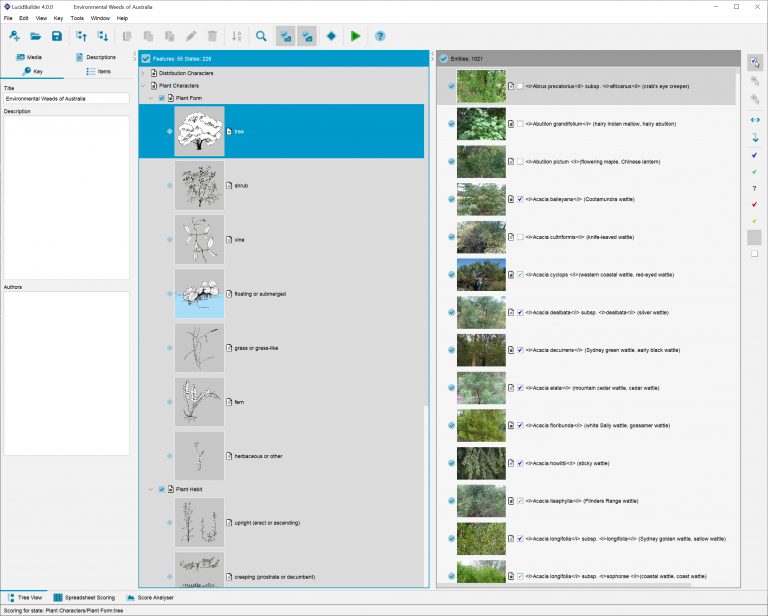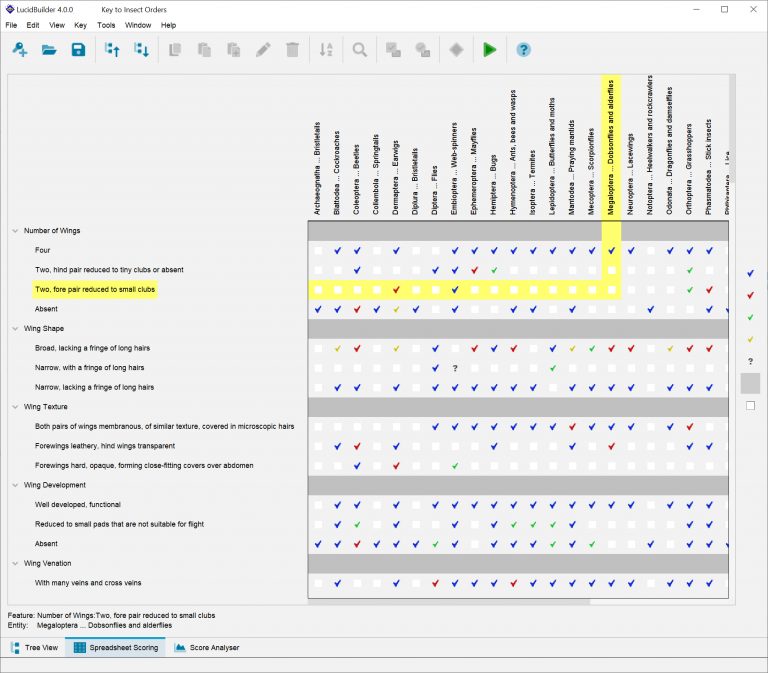The Lucid system comprises a Builder and Player for creating and deploying effective and powerful identification and diagnostic keys. Using the Lucid Builder, a user with knowledge concerning a group of entities (plants, animals, diseases, minerals, archaeological artifacts etc) can create interactive, random-access or dichotomous keys that can be deployed over the Internet, Hard Disk, USB or CD.
Users who wish to identify an animal or plant or some other entity for which a Lucid key has been developed can:
For a random access key “describe” their specimen to the key by choosing features listed in the key that match their specimen. The key progressively eliminates entities that do not match the chosen features until only one or a few possible entities remain.
For a dichotomous key choose answers to a series of questions or statements (couplets) that lead to an identification result. Unlike paper versions of dichotomous keys the Lucid player allows the user to easily keep track of their answers and skip questions to overcome the ‘unanswerable’ couplet problems often seen in larger more complex keys.
Further information and images can be accessed in fact sheets to confirm the identification.
See the topic “What does the Lucid Player do?“, or read the Lucid Player’s Help, for more information on how identifications are performed in the Player, and for other Player features that have been designed to help in the identification process.
The basic elements of a Lucid key are –
- a list of Entities.
- a list of Features and states or Couplets (for a dichotomous key) that can be used to describe those Entities.
- a matrix of score data for the Features associated with each of the Entities for the Features.
- various attachments (images, web pages etc) for the Entities and Features, to provide extra information to users.
The Lucid Builder provides all the tools necessary to create the Entity and Feature lists, couplets, encode the score data, and attach information files to items.



